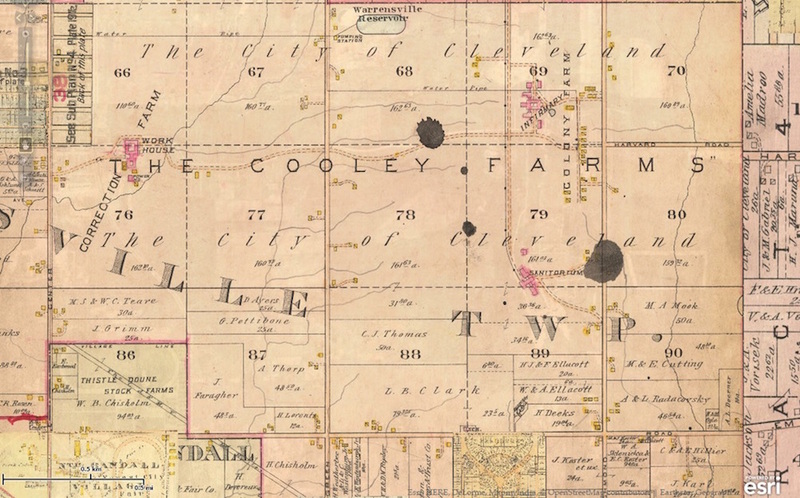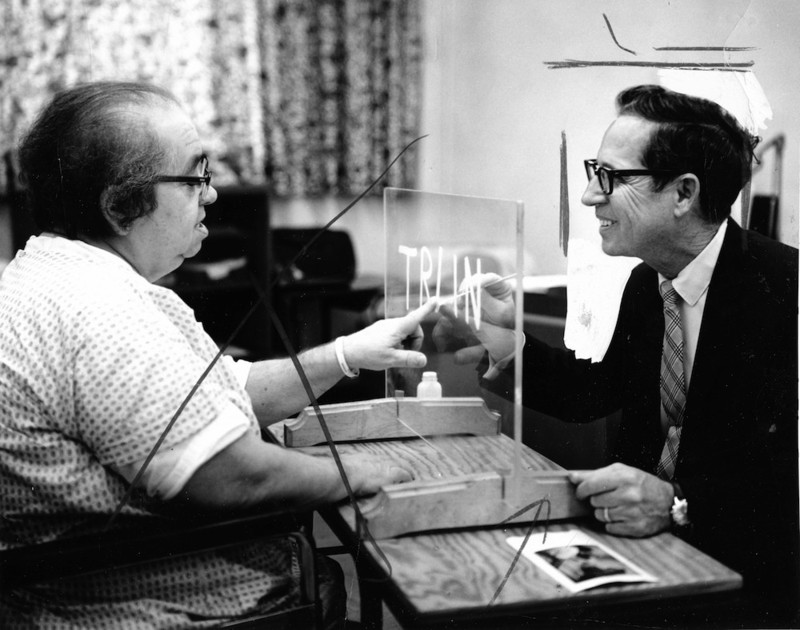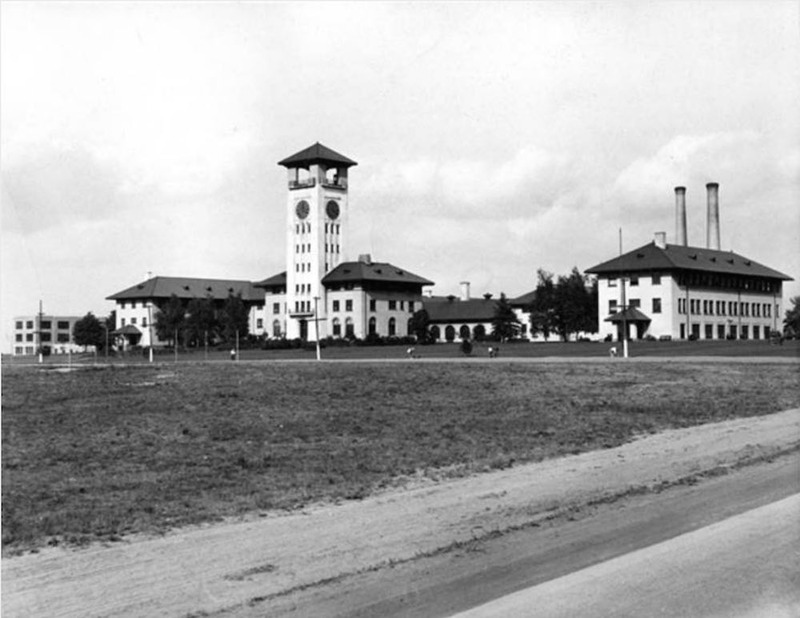Highland View Hospital
Cooley Farms and the Legacy of the "Fresh Air" Movement

Highland View Hospital was a Warrensville Township gem. Originally known as the Cuyahoga County Hospital, the name was changed to make the hospital sound private. Opening in 1953 as part of the Cuyahoga County Hospital System, with the goal of treating chronically ill patients, Highland View was known for treating and rehabilitating victims of strokes, those suffering from neuromuscular diseases, and the chronically crippled. The hospital continued a long history of rehabilitative institutional use of the Cooley Farms, named for minister and reformer Rev. Harris Cooley, in Warrensville Township. This land was outside of the Cleveland's corporation limit but was owned by the City of Cleveland. It was believed the "fresh air" of the pastoral area was good for the patients of the various institutions. By the mid-1910s, the land included the Cleveland Workhouse, Warrensville Sanatorium (later Sunny Acres Tuberculosis Hospital) and an Infirmary. Highland View Hospital was a county hospital on city property, making use of part of the former infirmary.
Highland View was a leading facility of its type in the country whose programs were innovative and proven to work. The hospital always had vacant beds, especially in the 1950s, because of a shortage of staff. Patients were not accepted for permanent placement, but the average stay of a patient was 67 days. The challenge the staff at Highland View faced was helping those under their care and getting them back into society and back to their regular lives. The hospital was excellent at helping people with spinal cord injuries. People who were expected to only live for another year at most were able to get the help they needed to return to an almost regular life. A unique service the hospital offered was the mobile dentist's office, which allowed patients with little mobility to get the dental care they needed in their own homes. Highland View staff helped their patients relearn not just simple things such as walking or how to maneuver around in the kitchen, but also complex things such as relearning to drive. The hospital had a mock kitchen to help patients relearn how to get around and do things in the kitchen with their new found disabilities. Dr. Charles Long II headed a program that helped handicapped patients relearn how to drive. The "automobility clinic" became a way to evaluate how patients reacted to driving situations and retrain them accordingly. "In all cases, those who (had) taken the driver's licensing examination (had) passed with above-average scores." The program gave hope to those with disabilities that they could get around by themselves when they left the hospital.
Not only were patients at Highland View Hospital prepared for their departure, but they were also mentally stimulated while at the hospital. Many patients needed some kind of activity to prevent boredom and possible depression. The two most popular programs were the Studio Greenhouse and the Art Studio. In the greenhouse patients could "work in soil, plant bulbs, root cuttings, clip faded flowers, arrange bouquets and do other small chores that are fun, and also good for muscles that need mild exercising." The plants and flowers provided a fun activity that surely added some joy to the patients' day. When discharged patients could take plants with them if they wished. In the Art Studio they could paint, draw, write, read or people watch. The staff members in the room were not there to supervise. All they did was provide advice or criticism if someone requested it. Those in the studio could express themselves in any manner they wished. Some of the art was even placed into the art sale held by the hospital or placed on display at the public library.
Despite all the good Highland View Hospital was doing, Beachwood Councilman Ralph S. Bing fought the hospital for years over the pollution pouring out of the hospital's two smokestacks. The hospital was confronted by the Ohio Environmental Protection Agency, which said it would deny air pollution variance applications made by the hospital because of unsatisfactory schedules for complying with state air pollution regulations. Ironically, patients came to Highland View for its pastoral setting and fresh air, yet the hospital was polluting the same air. In 1970 a proposal was put forth to the board to consolidate Highland View Hospital. The plan was to merge Highland View Hospital into Metropolitan General, a plan that took about six years to accomplish. In the last two years of the plan, people began speaking out against it. They wanted to polish Highland View into the gem it once was. People claimed a misuse of money from a levy occurred because the hospital board decided the money was better spent else where and that Highland View was beyond saving. The court ruled in favor of the hospital board and Highland View Hospital was closed and split between Sunny Acres and Metropolitan General.
Images






